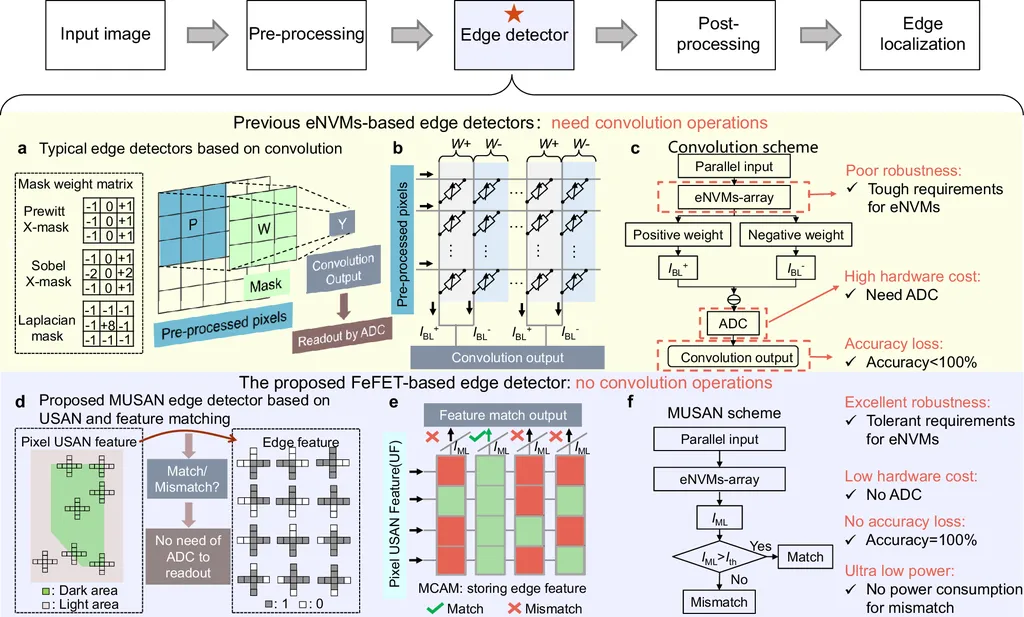In the realm of energy-efficient computing, a team of researchers from the University of Texas at Dallas has made a significant stride. Led by Yifan Wang and Muhammad Sakib Shahriar, the group has developed a novel ferroelectric transistor that could revolutionize edge artificial intelligence and neuromorphic hardware.
The researchers have created a CMOS-compatible ferroelectric transistor using hafnium-zirconium-oxide (HZO) and silicon. This device is capable of dual-memory operation, addressing a key challenge in physical reservoir computing (PRC). PRC is an energy-efficient computing paradigm, but it has struggled with scalability and reconfigurability issues. The new device overcomes these hurdles by incorporating both short-term and long-term memory, which are crucial for the reservoir and readout layers in PRC.
The device’s long-term memory is non-volatile, stemming from the ferroelectric HZO polarization. Meanwhile, its short-term memory is volatile, driven by engineered non-quasi-static (NQS) channel-charge relaxation. This is facilitated by the gate-source/drain overlap capacitance. The ferroelectric polarization acts as a non-volatile program for the volatile dynamics, modulating the threshold voltage and switching the NQS time constant. This switch determines the computational behavior between paired-pulse facilitation (PPF) and depression (PPD).
The practical implications for the energy sector are substantial. The device solves second-order nonlinear tasks with a normalized error of 3.69 x 10^-3 using only 16 reservoir states, a significant reduction. It achieves a response time of 20 microseconds, approximately 1000 times faster than current technologies, and consumes an energy of 1.5 x 10^-7 Joules. This breakthrough provides an immediately manufacturable pathway for neuromorphic hardware and energy-efficient edge intelligence.
The research was published in the journal Nature Communications, a highly respected platform for scientific discourse. This work not only advances the field of neuromorphic computing but also offers a promising solution for the energy-intensive demands of edge artificial intelligence. The researchers’ material-design principle is generalizable, applicable to various ferroelectric-semiconductor heterostructures, and extendable to oxide semiconductors and heterogeneously-integrated systems.
In summary, this innovative ferroelectric transistor could pave the way for more energy-efficient computing solutions, addressing the growing demands of real-time data processing in the energy sector and beyond.
This article is based on research available at arXiv.

